

RAY LUMPP - OLYMPIC CHAMPION
LIFELONG AMBASSADOR OF THE OLYMPIC MOVEMENT







Recently, I returned from a long business trip to find my office had been cleaned up and reorganized by my sweet and lovely wife. Most people would probably be very upset, unless they are married and have their spouse as a business partner. While I sat and pondered what to do, I spied my bookshelf and found two copies of one of my favorite books, “Einstein’s Dreams” by Alan Lightman. I pulled one off the shelf and began to read a few stories. It is an amazing look at how time might be perceived in an alternate universe. After a few minutes I began to think how important time is and how I might want to rethink how I use it. This notion inspired this letter to you.
I am entering my 8th and final year as President of the U.S. Olympians. I have had a wonderful experience and am extremely honored to have earned your confidence. But, as I contemplate the accomplishments that we have made over the last 7 years, I feel compelled to leave something behind that really matters. With that in mind, I attended my penultimate U.S. Olympians Association Annual meeting in Colorado Springs. At that meeting, I challenged the Chapter Presidents to take on a more significant role as a Board member. I also committed to a nationwide program leading to the London Games that will link all U.S. Olympians and Paralympians to a common challenge, a “walk to London”.
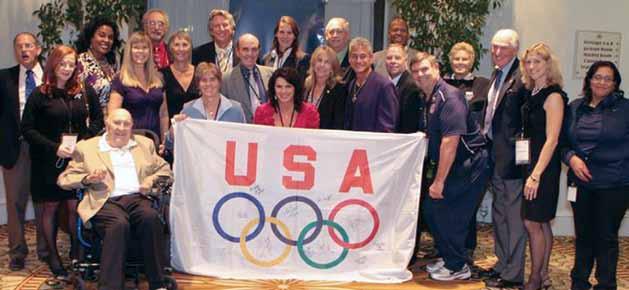
As you all know, the U.S. Olympians created a program called World Fit several years ago. The World Fit walk has become a tradition at several middle schools around the country. Using the World Fit walk theme, I challenge all Olympians to join me in celebrating our Olympic Heritage. I propose that we start on the West Coast and in each U.S. Olympian Chapter we have a 5k walk to honor the Olympic Team, inspire kids to exercise and to celebrate our role as U.S. Olympians!
In the spirit of a relay across America, I propose that a walk be planned in Los Angeles on the start of the World Fit program in the Spring. Perhaps the walk will start in Downtown Los Angeles and walk to the Olympic Stadium. At the Olympic Stadium we might host a barbeque, reunion and celebration. In addition, any athlete living in Southern California who is, or might become, a London Olympic team member, will be invited to be our honored guest. The next Chapter on the way to London might be the Northern California Olympians Chapter. They may choose to walk across the Golden Gate Bridge as part of their walk, ending with a party at the docks. The length of the walk and the celebrations will vary but the theme will be the same across the country
The final U.S. stop should be in Washington, DC with a salute to all London Olympic Team members. In London, we will have our final walk to the Olympic Park and have our final celebration before our Olympic Team begins to make Olympic history!
I don’t know about you, but I think this is a wonderful way to use my time. And, in so doing, we hope to establish a legacy for all Olympians. I hope you will join me, the Chapter Presidents and officers in participating in making this dream come true…the clock is ticking!




“Congratulations” was the to-the-point message delivered to Ray Lumpp by Ned Irish.
It was the single word, uttered on the last day of March 1948, which would change Lumpp’s life forever.
Irish, the celebrated basketball promoter then serving as executive president of New York City’s Madison Square Garden, had just finished presiding over a hugely successful edition of the USA Olympic Trials at the Garden, a four-doubleheader format that attracted 55,882 fans for the contests that determined America’s team bound for the historic London Olympic Games of 1948.
Lumpp, a 6-foot-1 guard who’d just concluded a brilliant collegiate campaign at New York University, became the lone Easterner selected for the 12-man team that would be headed for the first Olympic Games to be held in a dozen years, the World War II caused gap that remains the longest ever break in the annals of the modern Games.
And he would play a major role on the team that would roll to the gold medals at London’s Wembley Arena with eight consecutive triumphs.
Seven of them were total routs - 86-21 over Switzerland, 53-28 over Czechoslovakia, 66-28 over Egypt and 61-33 over Peru in the preliminary round; 63-28 over Uruguay in the quarter-finals; 71-40 over Mexico in the semifinals, and 63-21 over France in the gold medal game.
But a preliminary-round game against Argentina nearly turned into a disaster.
Team USA barely scraped by to win it, 59-57, to continue an all-time Olympic winning streak that began at Berlin in 1936 and would eventually stretch 62 games to the still-hugely controversial 51-50 loss to the Soviet Union in the 1972 championship clash.
“They (Argentina) were very good, and we (USA) just weren’t playing our game,” remembers Lumpp. As USA team manager Louis Wilke would later write, “It was only by the grace of the time clock that we happened to be ahead, rather than behind, when the (final) gun went off.”
Other problems the Americans faced were self-induced. Basically, the team was composed of two factions, the Phillips 66 Oilers group, champions of the AAU, and coached by Omar Browning, and the University of Kentucky Wildcats, coached by Adolph Rupp. Substitution was often by complete units.
The Oilers had beaten the Wildcats, 53-49, in the title game of the Trials at the Garden, thus handing the head coaching reins to Browning and the assistant’s job to Rupp.
“The Oilers were all about defense, Kentucky was all about offense,” said Lumpp. “That created some interesting moments.”
Strangely, though, the Argentina team failed to advance out of its preliminary group, bowing to Czechoslovakia as well as USA. And that cleared the way for the Americans to run the board.
“We were light years ahead of everybody except Argentina,” said Lumpp.
“The rest of the world was just learning the game, and it would take years longer for everybody else to catch on, nothing like the situation today. If you had told me back then, in 1948, that America would eventually have to send its pros, rather than college and AAU players, to win the gold medal, I would have said you were crazy. The championship game was so lopsided that the officials came over and asked us to take it easy on them, not to embarrass France.”

Lumpp would share high-scoring honors in the finale with Kentucky center Alex Groza, both with 13 points. Groza would lead the way in the whole tournament, too, with 76 points, while 7-foot center Bob Kurland of the Oilers totaled 65, and UCLA’s Don Barksdale, the first African-American player to represent the USA in Olympic basketball, netted 54. Lumpp registered 38 through the tournament.
For the Americans, all this happened playing under the strangeto-them international rules, and with a laced, soccer-style ball that bore little resemblance to the molded balls of today.
But the best was yet to come - the medal ceremony at Wembley.
“Standing on that victory stand was truly one of the great moments of my life,” Lumpp declares. “I wasn’t representing NYU. I wasn’t representing Indianapolis, the Knicks or Baltimore (the three pro teams he later played for.) We were never concerned with dollar signs. We were all playing for our country, and nothing could ever beat that.”
Lumpp had excelled at Newtown High School in Queens, New York City, before moving on to NYU. Like so many, he then took time out for World War II military service before returning to campus.
Once back at NYU, he teamed with such greats of the day as Dolph Schayes, Sid Tanenbaum, Frank Mangiapane and Don Forman. The team was coached by the famed Howard Cann, himself a U.S. Olympian, as eighth-place finisher in the shot put at the 1920 Antwerp Games.
Lumpp joined the NBA’s Indianapolis Jets after the Olympic Games and played 37 games in Indy before his welcome trade to the hometown New York Knicks, In a combined 61 games for the two clubs, he posted the best scoring average, 12.7 points per game, of his eventual five-year NBA career.
He stayed with the Knicks for three more years (playing with such greats as Harry Gallatin, Sweetwater Clifton, Dick McGuire and 1948 Olympian Vince Boryla.) The Knicks of 1950-51 and 1951-52 got to the NBA’s title round, bowing first to the Rochester Royals and then to the George Mikan-led Minneapolis Lakers, each time in a dramatic series that went down to a seventh game.
“The two great big men of that era were George Mikan and Bob Kurland,” said Lumpp. “Mikan was surely one of the greatest pros of all time, but we may never know how great Bob Kurland might have been. He stayed in the amateurs, worked as well as played for Phillips 66, and won another gold medal with the 1952 team.”
Lumpp famed for his hook shot, in an array of memorable moves closed out his NBA career with the 1952-53 Baltimore Bullets, winding up with all-time totals of 2,462 points, 391 rebounds, and 654 assists (in the earlier years, stat-keeping was incomplete.)
The New York Athletic Club beckoned and Lumpp would serve the NYAC for half a century as its athletic director. He also found time to venture into track and field, gaining recognition for his astute direction of the U.S. Olympic Invitational Meet, organized under U.S. Olympic Committee auspices, first at Madison Square Garden and then at the East Rutherford, N.J. Meadowlands Arena.
Those Meadowlands meets, staged on a steeply-banked, 10 lapsto-the-mile wooden oval, would produce some of the most epic
moments in indoor track and field history.
Ireland’s Eamonn Coghlan crashed through the 3:50 barrier to win the 1983 mile in 3:49.78, still the fastest indoor mile ever run in North America. Roman’s Doina Melinte won the 1990 women’s mile in 4:17.14, still the world indoor record.
“How can I ever forget Eamonn’s great race in ‘83?” said Lumpp, with infinite pride. “That was the year of the huge storm. We had to postpone the meet, and move it forward two weeks, to a Sunday afternoon. It turned out better than we ever could have imagined. Eamonn was just amazing that day. He had a great career, but that may have been his greatest day.”
After his 50 years at the NYAC, Lumpp retired to his Long Island home. He lost his beloved wife Annie nine years ago but gets intense joy from his four children and their spouses who have given him 17 grandchildren and, thus far, five greatgrandchildren.
“I’ve been a very lucky man, Annie and I had wonderful years together and now I have a wonderful family. All the kids are doing very good things. I was lucky enough to play for five Hall of Fame coaches - John Nucatola at Newtown High School, Howard Cann at NYU, Adolph Rupp with the 1948 Olympic team, Joe Lapchick with the Knicks, and Clair Bee with the Baltimore Bullets. How can you top that? And my luck is continuing.”
Lumpp marked his 88th birthday on July 11th and is the oldest of the six surviving members of the 1948 USA Olympic gold medal team.
With the Olympic Games returning to London next year, Lumpp will be returning to the British capital city, too. He will be the invited guest of 2012 USA head coach Mike Krzyzewski at next year’s London Games and can hardly wait for the trip to commence.
Coach “K” of Duke University selected Lumpp, as the senior delegate from that history-making squad that brought smiles to American fans after the tough years of World War II. All of Ray Lumpp’s memories are certain to flow as the 2012 USA team takes the floor in London.
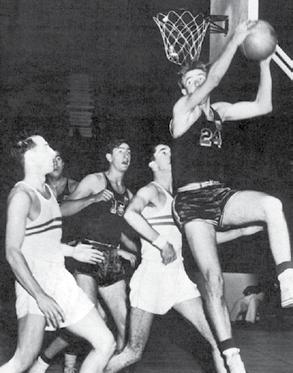
The Americans will face rival squads laden with NBA stars of their own. Dribbling off with the gold medals is no longer a given for America’s best. They will face big-time challenges.
Sixty-four years will have flown by since Ray Lumpp laced ‘em up at Wembley, but the adrenaline of it all still flows through his veins.
With teammates Wah Wah Jones (27) of Harlan, Ky., and Alex Groza (15) of Martins Ferry, Ohio, closing in, Ray Lumpp, (24) NYU player, takes a rebound in the 1948 London Games against the Argentine team. The Yanks, trailing at half time, won 59-57.




In the Spring issue of The Olympian, you may have read the article about the newly created USOC Team USA Career Program, a program for currently training and competing national team-level U.S. athletes who are employed with USOC partner companies through Adecco, another USOC partner company who helps the USOC administer the Athlete Career Program.
On June 23-24, 2011, the USOC hosted the first-ever Team USA Human Resources Summit in Colorado Springs. 16 human resources executives from 11 USOC partner companies attended the event to learn what is currently being done by the USOC and Adecco to assist athletes with career services as well as provide expertise on what more can be done. As a result, Adecco, GE, McDonald’s and TD Ameritrade have joined Hilton and Powerade in the commitment to hire currently training athletes through the Team USA Career Program. In the past two months, more than 10 Olympians, Paralympians and hopefuls have been hired by these companies and the USOC and Adecco continue to work hard in creating more job opportunities for athletes among additional USOC partners as well as established Adecco clients. Another reason for the growing success of the Team USA Career Program and overall Athlete Career Program is the addition of Angel Bovee, the new Adecco Athlete Liaison. Angel was an elite women’s boxing athlete who helped get women’s boxing on the Olympic Agenda at the 2012 Olympic Games next summer in London. Angel has varied professional experience and is currently finishing her master’s degree in recreation management.
Whether you’re an Olympian who is still training and competing, or an Olympian retired from sport, if you’re seeking career consultation or job placement assistance, please contact Angel for more information: 1-800-933-4473, ext. 1 or angelique.bovee@adeccona.com.



The anticipation and excitement of the 2012 Olympic Summer Games is upon us as we are less than 1 year away from Opening Ceremonies! While you finalize your Games preparations, Team USA athletes are in the midst of their final preparations for competing to be their best on the world’s biggest sports stage.
We are looking forward to hosting you in London, England at the XXX Summer Olympic Games. The USA House Business & Hospitality Center will serve as the anchor of the USOC’s 2012 hospitality operation. The USA House is located at:
• Royal College of Art, Kensington Gore, London SW7 2EU.
• Located in the Borough of Westminster
• Within walking distance to the upscale shopping area of Knightsbridge, home of Harrods and Harvey Nichols, approximately a 10 minute walk
• Directly across from Hyde Park, home to Triathlon and Marathon Swimming and a live site for LOCOG
• 1.4 miles from the IOC hotels and Hyde Park Corner, 25 minute walk
• Closest Tube Stations: South Kensington or Gloucester Road, approximately 12-17 minute walk
Our daily hospitality will include first-class food and beverage services, live Olympic Summer Games coverage in London, a business center, conference rooms, private event space and much more.
We will be launching a registration site in the very near future…STAY TUNED!!!


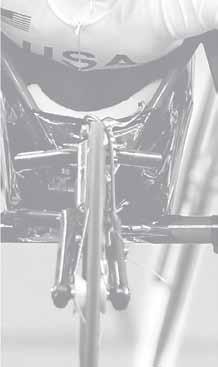

Andre Agassi (tennis, 1996)
American icon Andre Agassi was inducted into the International Tennis Hall of Fame.
The 41-year-old Agassi captured 60 ATP-level titles, in 90 finals, in a career that spanned parts of three decades and saw him become not just one of the world’s most recognizable names in tennis, but in any sport.
Agassi was this year’s lone selection in the Recent Player category and was enshrined in a ceremony at Newport’s International Tennis Hall of Fame & Museum on July 9, 2011.
Among Agassi’s titles were eight Grand Slam wins -- four at the Australian Open, two at the U.S. Open and one apiece at the French Open and Wimbledon. He is one of only seven men to capture the career Grand Slam and is the only male to have won the career Golden Slam, which is all fours majors and an Olympic gold medal (Atlanta, 1996).
Agassi captured 17 ATP Masters events, the season-ending ATP World Championships in 1990 and was a member of two United States Davis Cup championship teams. He went 30-6 in Davis Cup competition.
Regarded as one of tennis’ best-ever service returners and a hustling baseline player, Agassi was ranked No. 1 for a total of 101 weeks and the oldest person to hold the top spot at age 33.
Married to fellow Hall of Famer Steffi Graf since 2001, he was for a long time one of the mostmarketed athletes in the world.
The Las Vegas native captured his final Grand Slam title at the 2003 Australian Open and his last tournament in Los Angeles in 2005. He retired after losing in the third round of the 2006 U.S. Open with a career singles record of 870274. Following that U.S. Open defeat, Agassi delivered a memorable retirement speech and was honored with an eight-minute standing ovation from the crowd at Arthur Ashe Stadium.
Agassi earned over $31 million in career prize money, which is fourth only to fellow former world No. 1s Roger Federer, Pete Sampras and Rafael Nadal.
During his career and into retirement, Agassi has been a dedicated philanthropist. In 1994, he started the Andre Agassi Foundation for Education, which is devoted to reforming public education in the United States. In May, he partnered with Canyon Capital Realty Advisors on an innovative new real estate fund to promote the success and growth of best-in-class charter schools by building educational facilities in urban communities across the U.S.
In 2001, he opened the Andre Agassi College Preparatory Academy, a free public charter school in Las Vegas’ most at-risk neighborhoods for kindergarten through grade 12.
The great Agassi and Graf reside in Las Vegas with their two children.
Ruthie Bolton followed her sister to Auburn to begin her college basketball career. Mae Ola Bolton’s little sister was inducted into the Women’s Basketball Hall of Fame in Knoxville.
Bolton was honored for a distinguished college, international and professional career. She is still among the leaders in most of Auburn’s key categories, though she played in the 1980s, her career doesn’t stop there. She has two Olympic gold medals, was part of 10 U.S. national teams, played 10 years of professional basketball and scored more than 2,000 points in the WNBA.
She played in a record 132 games for Auburn, helping the Tigers to a 119-13 record and three Southeastern Conference titles over that stretch.
She joined her former college coach, Joe Ciampi, as Auburn’s representatives in the Hall of Fame.
Others who were inducted Saturday night were Val Ackerman, Vicky Bullett, Muffet McGraw, Pearl Moore and Lometa Odom.

Rita Crockett was a member of the 1980 and 1984 U.S. Women’s Olympic Teams, helping USA to the silver medal at the 1984 Olympic Games. She was one of six players selected to the All-World Team in 1981 as she led the U.S. team to the 1981 FIVB World Cup bronze medal. Crockett assisted the United States to the bronze medal at the 1982 FIVB World Championship in Peru. For 17 years, she played and coached in the United States, Japan, Italy and Switzerland. From 1982 to 1986, she played for the Daiei Team in Kobe, Japan, helping the team to the Japan V-League title and being named MVP in 1986. From 1988 to 1993, Crockett played for Matera and Rome in Italy. In 1990 she was named most valuable player of the Italian League and helped Rome win the European Championship in 1993. Crockett was the first African-American to win a beach volleyball World Championship in 1989 alongside Volleyball Hall of Fame partner Jackie Silva.
Shannon Johnson joins Northwestern State’s staff Olympic Gold medalist and four-time WNBA All-Star Shannon Johnson is the newest member of the Northwestern State women’s basketball program.
Coach Jennifer Graf named Johnson as an assistant. Her hiring is pending approval of the school’s board of supervisors.
Johnson was a member of the 2004 United States basketball team that won a gold medal at the Summer Olympics
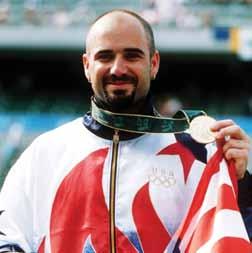
in Greece. She also earned a gold medal at the World Championships that year.
Johnson had an 11-year WNBA career, playing for the Seattle Storm, Houston Comets, Detroit Shock, San Antonio Spurs, Connecticut Sun and Orlando Miracle. She also competed in the American Basketball League for three seasons and was a 1998 All-Star when playing for the Columbus Quest. Her 1997 and 1998 teams won the ABL championship.
Women’s Professional Soccer Star Striker Abby Wambach was honored as the Women’s Sports Foundation as the Sportswoman of the Year (Team Sports) at the 32nd Annual Salute to Women in Sports Awards Gala held on Wednesday, October 19, 2011 night at the Cipriani Wall Street in New York City.
Wambach received the esteemed Sportswoman of the Year Award, given to an individual athlete in a team sport who exhibits exceptional performances over a 12-month time span (August 2010-July 2011). The celebrated soccer star earned this award for her triumphant season including being named the 2010 U.S. Soccer Female Athlete of the Year (for the fourth time) and named to the Women’s Professional Soccer (WPS) Best XI in October 2010. Wambach’s four goals in Germany made her the USA’s all-time leading scorer in Women’s World Cup history with a total of 13 goals, moving her past the great Michelle Akers. During the one-year time span considered for the award, Wambach scored a total of 10 goals during WPS competition including three multi-goal games and the second
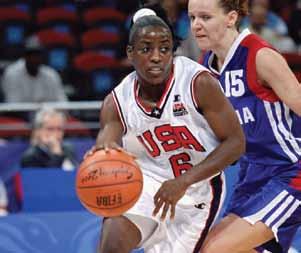




ever hat trick in WPS history. Wambach, who both coached and played for the Boca Raton based magicJack club, tied for the second most goals during the 2011 season (9) despite playing only 11 regular season matches due to National Team commitments.
Past winners include Venus and Serena Williams, Jessica Mendoza and Mia Hamm. This year, the winner was selected based on a total score collected by the public and the Women’s Sports Foundation’s Awards Committee.
Wambach was on hand in New York to receive her award alongside WSF Founder Billie Jean King, WSF President Laila Ali, Los Angeles Dodgers manager Joe Torre, Academy Awardwinning actress Holly Hunter, Venus Williams (Tennis), Maya Moore (Basketball), Mallory Weggemann (Swimming), Michelle Kwan (Figure Skating), as well as WPS Stars and teammates of the U.S. Women’s National Soccer team.
Up next on the pitch for Wambach is January’s CONCACAF Olympic Qualifying tournament where she will rejoin her fellow WPS Stars when the US National Team begins their road to the London Olympics.
Women’s Professional Soccer is the world’s best soccer league for women, featuring stars from the U.S. National team and around the globe. WPS completed its third full season of competition in August as Western New York Flash (Rochester, NY) earned the 2011 WPS Championship, following FC Gold Pride (2010) and Sky Blue FC (2009) into the record books as the League’s top teams. The 2011 field of teams included Atlanta Beat, Boston Breakers, Philadelphia Independence, Sky Blue FC (New Jersey), magicJack (Florida) and Western New York Flash. For more information, visit the WPS official website at http://www.womensprosoccer. com/ or follow along via our social media networks at www.twitter.com/womensprosoccer and www.facebook.com/womensprosoccer.


Willye White (athletics, 1956, ‘60, ‘64, ‘68, ‘72)
Greenwood Mississippi has named a section of U.S. Highway 49 South between Greenwood and Sidon the “Willye B. White Memorial Highway.” White, who died of pancreatic cancer in February
2007 at the age of 68, participated in her first Summer Olympics in Melbourne, Australia, in 1956, at the age of 16. She brought home a silver medal in the long jump — the first time an American woman had won a medal in that event.
She won her second silver medal in the 1964 Summer Olympics in Tokyo as a member of a 400-meter relay team. She also participated in the 1960, 1968 and 1972 Summer Olympics.
The Greenwood Commonwealth reports, after retiring, she set up the Willye B. White Foundation to help deserving low-income girls participate in sports.
John Woodruff was an Olympic gold medal winner, Pitt alumnus, pioneer in the AfricanAmerican community, Connellsville native and military veteran, and the list goes on.
On Friday, October 14, 2011, friends, family and those he inspired gathered at Pitt’s Hillman Library to reflect on Woodruff’s accomplishments and honor his legacy at the unveiling of a new, interactive display of the gold medal he won in the 800 meters at the 1936 Olympics.
“He was the epitome of a track and field athlete,” said Herb Douglas, Jr., a 1948 Olympic bronze medalist who was just 18 when he first met Woodruff. “He is a pillar for every person here of color, because we all stand on his shoulders.”
Just a freshman at Pitt at the time and not an athlete favored to medal at the Olympics, Woodruff found himself boxed in early on in the final heat. In what newspaper accounts later called “the most daring move ever seen on a track,” Woodruff stopped, let the other runners pass him then came from the back of the pack to win in 1:52:9.
Of the 15 gold medals won by the United States 75 years ago, eight were by African-Americans.
“We were not in baseball. We were not in basketball. We were not in football,” Douglas, Jr., said. “But those eight athletes changed the complexion of sports for people of color for all time.”
Woodruff passed away on Oct. 30, 2007, at the age of 92.
His son, John Woodruff, Jr., represented the family, including his mother, Rose, who just celebrated her 90th birthday.
“It probably only became really significant to me when I became an adult,” Woodruff, Jr., said of understanding his father’s accomplishments. “I lived in my father’s shadow, which was difficult, though he never placed any demands on me as an athlete. But in any event, when I became an adult and could better understand the kinds of things he went through, not just as an athlete but as an African-American athlete, that’s when I think I really gained a true appreciation of the experience he had.”
Approximately 125 people were in attendance, including some 50 members of Pitt’s track and field team, to whom Pitt alumnus and two-time Olympic gold medalist Roger Kingdom told they represent a long list of people who came before them. “His light will continue to shine through you,” Kingdom told the student-athletes.
Also in attendance was Melanie Hartsell, whose middle school math class determined that Woodruff would have set a world record in the 1937 Pan-American games despite his being stripped of the gold after it was ruled the track was short by six feet.
“We measured to see how fast he could actually move in a second, and we determined that he easily would have beat the world record by a second and a half even if he ran the whole race, since supposedly it was short,” she said.

Hartsell and her daughter, Nicole, who took part in the project as an eighth grader, flew in from Grand Prairie, Texas, for the event.
“This just means the world to me and my daughter to see another milemarker being done for him and to meet his son,” Melanie Hartsell said.
Karen Price can be reached at kprice@tribweb.com or 412320-7980.
By :Karen Price PITTSBURGH TRIBUNE-REVIEWTeresa Edwards (basketball, 1984, ‘88, ‘92, ‘96, ‘00)
Teresa Edwards elected Chef de Mission for London Games
U.S. women’s basketball star Teresa Edwards, a five-time Olympian and four-time champion, was named as chef de mission for the United States team at the 2012 London Olympics.
Edwards, chosen by the U.S. Olympic Committee board of directors, will be the U.S. team leader and liaison between London Olympic organisers, the International Olympic Committee and other national Olympic committees at the Games.
“As a five-time Olympian, Teresa understands the needs of


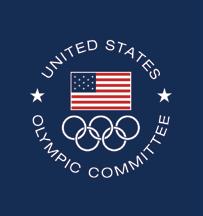
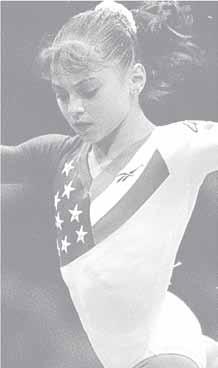


our athletes at the highest level of competition,” USOC chairman Larry Probst said. “She’s an American hero and I’m grateful she has agreed to serve in this important role.”
Edwards, was also inducted into the Basketball Hall of Fame in August, is an assistant coach with the Women’s NBA’s Tulsa Shock. She first won Olympic gold at the 1984 Los Angeles Games and added titles in Seoul in 1988, Atlanta in 1996 and Sydney in 2000.
“I’ve been lucky enough to be associated with the Olympic movement for more than 30 years,” Edwards said. “To be able to give back in this fashion is incredibly humbling.”
Former U.S. Olympic coach Schubert hired by Golden West College
Eight-time U.S. Olympic coach Mark Schubert has been named the men’s and women’s swimming and diving coach at Golden West College, the college announced Tuesday.
The Surfside resident has been coaching with Golden West Swim Club.
Schubert said in November that he was fired

from his position as the U.S. national team coach and general manager.
He returns to the college ranks for the first time since coaching at USC, where he guided the women to a NCAA title in 1997.
He also guided the Texas women to a pair of NCAA titles prior to his arrival at USC.
He first made his mark in the coaching ranks with the Mission Viejo Nadadores starting in the 1970s.
Ellen Deerman (judo, 2000, ‘04)
Chace Deerman was born April 25, 2011 at only 26 weeks; he weighed in at 2.1 lbs. He joins his older brother Colton and proud parents; Ellen (judo, 2000, ’04) and Allen Deerman. Chace might be another future Olympian, because he’s a champion. Watch out for him in the 2028 Olympics!!
Ruthie Bolton (basketball, 1996, 2000)
Ruthie Bolton announced the birth of her son Christopher on August 17, 2011.
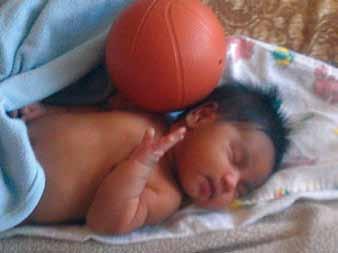

Michael Barrett (basketball, 1968)
Mike Barrett, the West Virginia Tech basketball star who played on the U.S. gold medal team in the 1968 Olympics, died of a long illness in Nashville, Tenn. He was 67.
Born in Montgomery and raised in Richwood, Barrett led Coach Neal Baisi’s Golden Bears to the 1963 West Virginia Conference tournament championship at the old Civic Center, and was named most valuable player. He then led the Bears to regular-season titles in 1964 and 1965.
He earned his Olympic gold alongside Spencer Haywood, Charles Scott and Jo Jo White in the Mexico City games. Afterward, he made the All-Rookie team in the American Basketball Association in 1969-70, playing two full seasons in that league and part of a third.
He also was a successful businessman in the Nashville area, and often made his way back to Montgomery and Richwood. As recently as two seasons ago, he played in the alumni game at Tech, where his No. 10 is retired.
By standards then and now, he was skinny. The basketball stats archive website basketball-reference.com lists him at 6-foot-2, 155 pounds, and one longtime friend doesn’t dispute it.
But Pete Kelley never disputed Barrett’s ability, either.

“When he walked into the gym for the first time, we asked ourselves if this kid can play,” said Kelley, a retired Tech official and Barrett’s teammate. “We found out really quickly he could. He was an outstanding player.
“His exploits on the court were just magical. He has a special relationship with the fans; they loved him.”
Barrett played from 1961-65, averaging just over 22 points. He led the league in his senior season with a 27.7 average, as he was named to the All-WVC team for the third time. He also was named to the Little All-America team.
From Tech, he entered the Navy, which had a number of “sub” teams that played around the country and the world. He played and coached teams to a 68-33 record and was named to the All-Navy team twice. He was the tournament MVP when he led the Armed Forces All-Stars to a national AAU title in 1968.
Service players of the time were invited to try out for the U.S. Olympic team, which Barrett did. He was one of three armed forces players to make it, joining John Clawson and Michael Silliman.
Ray Beckman (soccer, 1948)
Ray Beckman followed his five brothers into the Navy during World War II and survived a kamikaze attack on a hospital ship. After the war, he followed his father into the St. Louis Fire Department, where he survived a fall from a burning stairway.

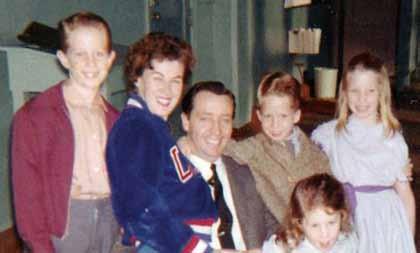


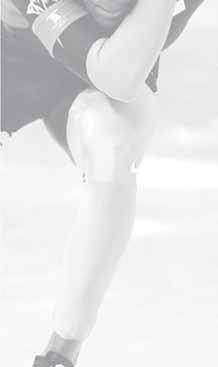

After retiring as a fire fighter, he turned a part-time position into a full-time job at John Burroughs High School, where he was the soccer coach for 51 years. He was also a member of the 1948 Olympic soccer team.
Raymond P. Beckman died of coronary artery disease on July 13, 2011 at Bethesda Meadow nursing home in Ellisville, his family said Monday. He was 86 and a long-time resident of south St. Louis.
He was the second-youngest of eight children and grew up in north St. Louis. He attended the old McBride High School and earned his GED before enlisting in the Navy in 1943 at age 18.
He served as an electrician aboard the Comfort, an American hospital ship. On April 28, 1945, the ship left Okinawa for Guam with about 700 wounded patients. At 10:41 p.m., a Japanese suicide plane hit the ship’s side and crashed into its three operating rooms.
The crash killed 30, including six Army nurses and seven patients, and wounded 48.
Ray had just been to confession with a chaplain near the operating room area before the crash.
Beckman’s five brothers also survived the war.
Ray Beckman played soccer since childhood and starred in local semipro leagues at the old Sportsman’s Park. After the war, he earned a spot as center-forward on the 1948 Olympic team that competed in London.
In those days, it was one loss and you’re out, the Americans’ first match was against the mighty Italian soccer team with a 9-0 loss.
Back home, he married and joined the fire department. He was a fire fighter for 18 years before injuring his back in a fall from a burning stairway.
While still a fire fighter, he worked part time helping coach the Burroughs soccer team. After
retiring from the fire department, he took a fulltime job at Burroughs, coaching the soccer team and taking care of the athletic grounds.
“He knew each of the kids individually and treated them with respect,” said Jim Lemen, a retired athletic director who is writing a book on the school’s athletics. “The kids remember him as their friend.”
Ray retired in 2002. Burroughs dedicated its soccer field to him last year and holds an annual “Ray Beckman Invitational Game”.
He was inducted into the St. Louis Soccer Hall of Fame in 1980 and was honoured by that organization as the Jimmy Dunn Coach of the Year in 2000.
He and his wife, the former Betty Shea, met during a game of keep away at a church event. He yelled, “Throw the ball to me,” and she did — before realizing that he was on the opposite team. That later got him her phone number.
Ray is survived by his wife, four daughters, one son, one sister, one brother, eight grandchildren and four great-grandchildren.

Juno Irwin Cox (diving, 1948, ‘52, ‘56, ‘60)
Juno passed away on July 2, 2011 at the age of 82. She participated in 4 Olympics as a platform diver, winning a bronze medal in Helsinki in 1952 and a silver medal in Melbourne in 1956. She also participated in the Pan American Games, placing 2nd in 1955 and 1959. She was National Champion twice. She is survived by her loving husband Phillip Cox, son Michael, daughters Maureen, Cynthia and Victoria. She was preceded in death by her son Randall. She was a loving grandmother and great-grandmother to many grandchildren and great grandchildren. She will be forever loved and missed by her many friends and family. Any remembrance can be sent on her behalf to the, Olympians for Olympians Relief Fund, 1 Olympic Plaza, Colorado Springs, CO 80909.
George Harrison (swimming, 1960)
George Harrison, who won a gold medal for swimming during the 1960 Olympics in Rome, passed away on October 3, 2011 from complications after surgery. He was 72.
Harrison, who attended Acalanes High and swam for both Stanford and the Santa Clara Swim Club, set a world record at the age of 17 in 1956 in the 200-meter individual medley, and won the AAU indoor IM for three straight years from 1958 -setting a new U.S. shortcourse record on each occasion.
Outdoors, he was the AAU champion in 1955 and set two world records for the 400 Individual Medley in 1960. The event was not included in the Olympic program until 1964, and Harrison was forced to turn to another event in search of Olympic honors in Rome. After winning the 200 meter free at the Final Trials, he swam the lead-off stage for the relay team which set a new world record at the 1960 Olympics. At the 1959 Pan American Games he won silver in the 400 metres freestyle.
George is survived by his wife Susan, children Karen, Kristen and Mike; and two grandchildren.
Jeret “Speedy” Peterson (freestyle skiing, 2002, ‘06, ‘10)
Jeret “Speedy” Peterson 1981 ~ 2011 Jeret “Speedy” Peterson, 29, of Boise, died Monday, July 25, 2011 outside of Park City, Utah. Jeret was born December 12, 1981 in Boise, Idaho to

Linda (Shannon) Peterson and Tim Peterson. Jeret was raised in Boise and graduated from Timberline High School in 2000. He attended the University of Utah and was most recently enrolled at Westminster College where he was majoring in finance and business. He was a strong student and recently made the Dean’s List. Jeret was a true Boise-an, but also spent much of his time in Park City, Utah, where he pursued his career and life goals as a skier. He was a member of the U.S. Ski Team from 1998 to 2011, and represented the United States in three Olympic Games: Salt Lake City, USA (2002), Torino, Italy (2006), and Vancouver, Canada (2010) where he won the silver medal in aerial skiing with his signature “Hurricane” jump. He was passionate about several interests including freestyle skiing, fly-fishing, and construction. He was also a pilot-in-training, an entrepreneur and avid travel and language enthusiast. Jeret was a compassionate soul, known for his love of children and animals. He was a great friend and friendships meant the world to him. He was a fierce competitor, always looking to find fun in life’s challenges. Jeret is survived by his mother, Linda Peterson of Boise, ID; his sister and brother-in-law Erika (Peterson) and Jay Finks of Vancouver, WA; two nephews, D’Arcy and Lawson Finks of Vancouver, WA; his grandmother and grandfather, Miriam and David Mallea of Hines, OR; auntie Cynthia Mallea of Hines, OR; his father Tim Peterson of Boise, ID along with his half-brothers, Jake and Derek Peterson, both of Boise, ID; and extended families in Idaho, Oregon, California and Utah. Jeret was preceded in death by his sister, Kimberly Ann Hensley and uncle, Dale “Bud” Ross. Jeret is remembered as a philanthropist and for his life’s mission of giving back to the community. The family asks

 JERET “SPEEDY” PETERSON
JERET “SPEEDY” PETERSON
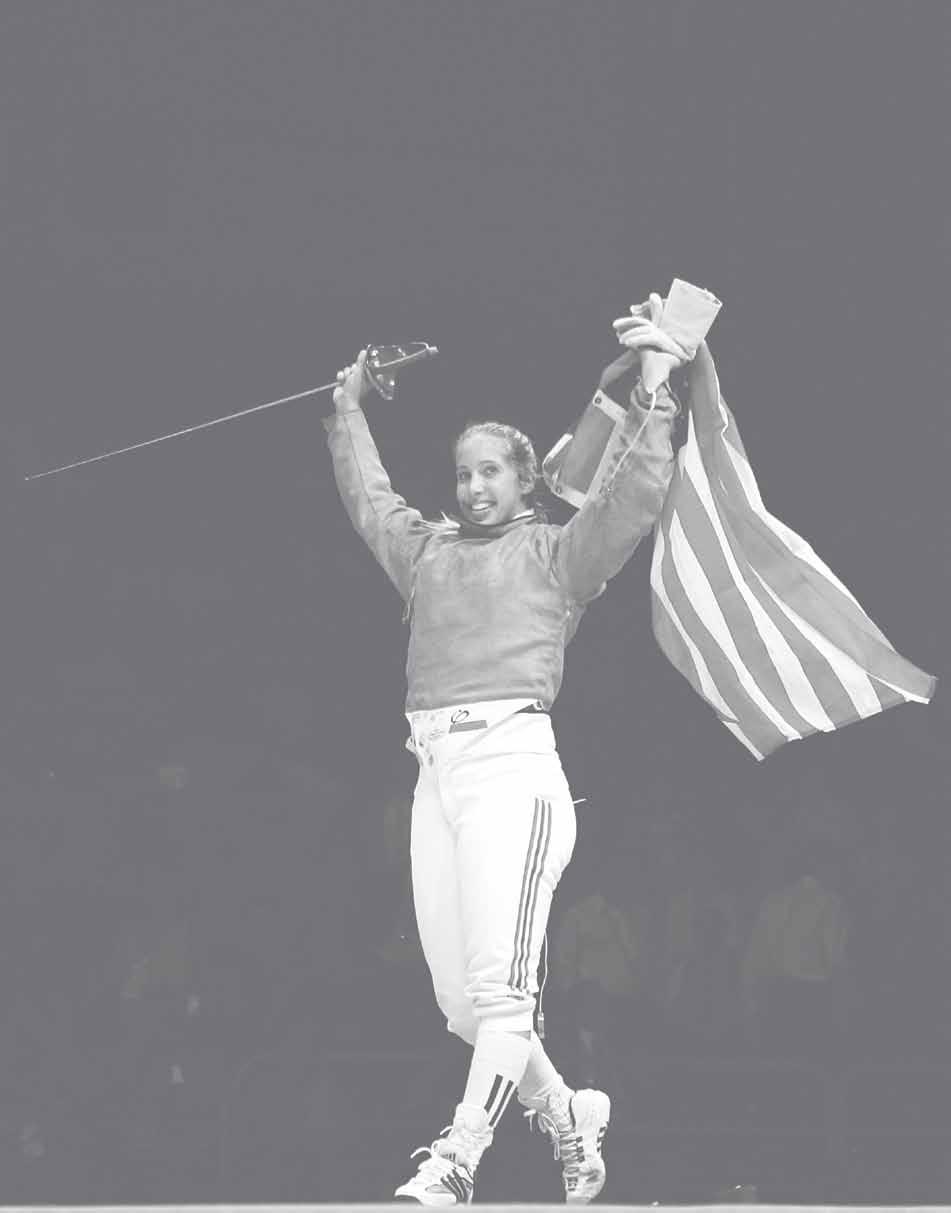

that in lieu of flowers, donations be made to The Speedy Foundation, www.thespeedyfoundation. org.
Mark Whitehead passed away July 6, 2011 while attending the USA Cycling Junior Track National Championships in Frisco, TX. He was 50.
His 20 national championships included the team pursuit in 1984, which contributed to his being chosen for the U.S. squad that competed in the Los Angeles Games.
Whitehead was born Feb. 14, 1961, in Bell and began entering cycling races when he was 11.
He traced his interest in the sport to his father, who had competed in Europe, Whitehead later recalled.
In 1978, at the age of 17, he achieved his first major international success when he made the world championship team for juniors.
The next year, The Times called him “one of the hottest young bicycle racers in Southern California.”

He was known as a temperamental competitor whose “passion for winning resulted in fiery elbow-to-elbow sprint finishes against other top competitors,” according to an online remembrance by the Valley Preferred Cycling Center, a Pennsylvania velodrome.
In 1985, he married cyclist Rebecca Twigg. They divorced two years later.
After retiring from competition in 1989, Whitehead coached some of cycling’s top athletes, including multiple world champion Sarah Hammer and short-track specialist Rahsaan Bahati.
As a coach, “my intensity and ability to motivate are great,” he told Fixed Gear Fever, an online racing information site, in 2005. “I have a great drive to succeed. On the other hand, my downfall is opening my mouth at the wrong time.”
Albert passed away June 1, 2011 at the age of 76. Beloved husband of Hollis G. Wiggins; beloved father of David (Emily) Wiggins of Columbus, OH, Susan Wiggins of Gilbert, AZ and Rhiana Elizabeth Wiggins of Seattle, WA.
Brother of Marge Hanley of Green Valley, AZ.
Mr. Wiggins was an Olympic swimmer and the first swimmer on the cover of Sports Illustrated magazine. A multiple world record holder at Ohio State University, Mr. Wiggins was inducted into the International Swimming Hall of Fame in 1994. He was a revered lawyer in the field of tax and estates since 1960. Contributions may be made to The United States Olympic Committee, 1 Olympic Plaza, Colorado Springs, CO 80909 or Action for Animals, P.O. Box 814, Latrobe, PA 15650 or Ligonier Valley Library Association, 120 Main Street, Ligonier, PA 15658.
On behalf of the board of the Olympians for Olympians Relief Fund (OORF), thank you for your recent gift. Your contributions are a critical component to the success of the OORF and the Olympians in need that it serves. Since its inception in 1998, the Olympians for Olympians Relief Fund has provided aid to many Olympians, and with your generosity, we’ll continue to help many more Olympians now and in the future.
If you would like to contribute please visit us at www.oorf.org or call us at our Olympian Hotline: 1.800.717.7555
Torch Bearer
Nicole Barnhart (soccer, 2008)
John Carenza (soccer, 1972)
Micki King (diving, 1968, ‘72)
Tom Martin (field hockey, 1964)
Edward Williams (biathlon, 1968)
Gold Medal
Anita DeFrantz (rowing, 1976, ‘80)
Ed Gilbert (swimming, 1948)
Steven Gregg (swimming, 1976)
Bonnie Warner Simi (luge, 1984, ‘88, ‘92)
Silver Medal
Scott Ethan Allen (figure skating, 1964)
John Baldwin (figure skating, 2006)
Willie Banks (athletics, 1980, ‘84, ‘88)
Michael Bantom (basketball, 1972)
Wayne Baughman (wrestling, 1964, ‘68, ‘72, ‘76, ’80)
Richard Bell (rowing, 1980)
John Bennett (athletics, 1956)
Jeffery C. Blatnick (wrestling, 1980, ‘84)
George Breen (swimming, 1956, ‘60)
Carol Brown (rowing, 1976, ‘80, ‘84)
Curt Clausen (athletics, 1996, ‘00, ‘04)
Jeanne Collier (diving, 1964)
Pat B. Winslow Connolly (athletics, 1969, ’64, ’68)
Thomas Fitzgerald (team handball, 1996)
Dick Fosbury (athletics, 1968)
Thomas Gompf (diving, 1964)
Francis Gorman (diving, 1964)
Paul William Hait (swimming, 1960)
Derian Hatcher (ice hockey, 1998, ‘06)
Ellen William Henry (luge, 1968)
Caroline Holmes (gymnastics, 1968)
Stacey Johnson (fencing, 1980)
Wendy Williams Lian (diving, 1988)
Greg Louganis (diving, 1976, ‘80, ‘84, ‘88)
Tom Lough (modern pentathlon, 1968)
Anna Norgren Mahon (athletics, 2004)
Cathy Jean Marino (canoe/kayak, 1988, ‘92)
John Mathias (yachting, 1976)
Edith McGuire (athletics, 1964)
Phoebe Mills (gymnastics, 1988)
Lori Ogren (team handball, 1992)
James O’Rourke (canoe/kayak, 1964)
Pamela Boyd-Petroski (team handball, 1984)
Peter Raymond (rowing, 1968, ’72)
Robert Rosser (biathlon, 1998)
Cindy Rusher (rowing, 1988, ‘92)
RaNae Jean Blair Seaman (athletics, 1964, ‘68)
Gary Sheerer (waterpolo/diving, 1968, ‘72)
Justus Smith (rowing, 1948)
Wallace Spearmon (athletics, 2000)
Cindy Stinger (team handball, 1984, ‘88, ‘92)
Joseph Michael Vargas (water polo, 1980, ‘84)
Chad Vaughn (weightlifting, 2004, ’08)
Russell Webb (waterpolo, 1968, ’72)
John Williams (equestrian, 2004)
Shelby Wilson (wrestling, 1960)
Rick Wohlhuter (athletics, 1972, ’76)
Augie Wolf (athletics, 1984)
Mariel Zagunis (fencing, 2004, ‘08)
Bronze Medal
Osmar Alaniz (boxing, 1992)
Michael Allen (cycling, 1964)
Ann Battelle Ayad (freestyle skiing, 1992, ‘94, ‘98, ’02)
Thane Baker (athletics, 1952, ‘56)
Mohammad Barakat (field hockey, 1984)
Luke Bodensteiner (skiing, 1992, ’94)
Katie Borg (canoe/kayak, 1992)
Joan Braskamp (swimming, 1952)
Charles Butler (ice dancing, 1998)
Matt Cetlinski (swimming, 1988)
Robert Cochran (skiing, 1972)
Caryn Davies (rowing, 2004, ’08)
Sharon Day (athletics, 2008)
Barbara Gilders-Dudeck (diving, 1956)
Marco Evoniuk (athletics, 1984, ‘88, ‘92)
Richard Gilbert (diving, 1968)
Scotty Gregg (field hockey, 1984)
Gary Hall, Sr. (swimming, 1968, ‘72, ‘76)
Janet Harville (rowing, 1980, ‘84)
James Hazewinkel (wrestling, 1968, ‘72)
Doris Brown Heritage (athletics, 1968, ‘72)
Elliot Hovey (rowing, 2008)
Paul Jensen (ice hockey, 1976)
Gary Jonland (speed skating, 1972)
Steve Kirk (team handball, 1984, ‘88)
Ford Konno (swimming, 1952)
Tommy Kono (weightlifting, 1952, ‘56, ‘60)
Sammy Lee (diving, 1948, ‘52)

Ronald Morris (athletics, 1960)
Linda Murphy (volleyball, 1964)
Stephen Netburn (fencing, 1968, ‘72)
Stan Huntsman (athletics coach, 1968)
Robert Huscher (bobsled, 1968)
Arthur Jackson (shooting, 1948, ‘52)
Patrick Jeffery (diving, 1988, ‘96)
Jackie Zoch Major (rowing, 1976)
Mary McCagg (rowing, 1992, ‘96)
Gail Marquis (basketball, 1976)
Mark Mendelblatt (sailing, 2004)
Gene Mills (wrestling, 1980)
Ron O’Brien (diving coach)
Julie Overhouse (diving, 1992)
Brandon Paulson (wrestling, 1996)
Barbara Perry (volleyball, 1968)
Kikkan Randall (cross country skiing, 2002, ‘06, ‘10)
Debra Rose (beach volleyball, 1996)
Bradley Schumacker (swimming/waterpolo, 1996, ‘00)
Guenter Seidel (equestrian, 1996, ‘00, ‘04)
Steve Sertich (ice hockey, 1976)
Ernie Seubert (cycling coach, 1972)
Jim Shea, Sr. (bobsled, 1964)
Danielle Slaton (soccer, 2000)
James Spivey (athletics, 1984, ‘88, ‘92)
Janet Moreau Stone (athletics, 1952)
Sara Studebaker (biathlon, 2010)
Ronald Urick (canoe/kayak, 1988)
Nelson Vargas (soccer, 1996)
Louis Vitucci (diving, 1964)
Craig Ward (nordic skiing, 1980)
Mal Whitfield (athletics, 1948, ‘52)
George Wilson (basketball, 1964)
Elaine Zayak (figure skating, 1984)
Castro Valley Women’s Club
Dan Collins
John & Barbara Galloway
Jeff Hunt
Scott Jarvis
Mark Ladwig
Larry Powell
Dolores Richey
Stuart Walker


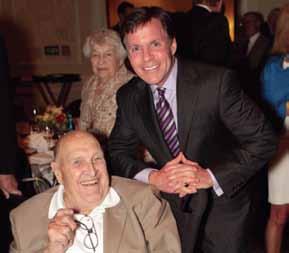

In association with the Athlete Outreach Project and in support of the American Lung Association Utah Chapter members posed for pictures, signed autographs and were interviewed on a local radio station.
(L-R) Tracey Anderson, Matt Griff, Jeremy Holm, Cody Reese, Lacy Schnoor, Blaine Lindgren, Debbie Clark, Missy Marlowe, Preston Griffal and Grahm Watanabe.
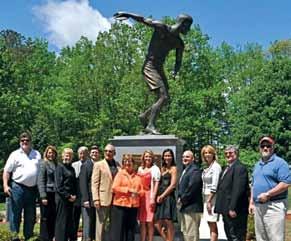



This distinguished group of track & field Olympians were honored at this year’s Mt. Sac Relays at a dinner celebrating the 50 year anniversary of a record setting day at the track. These Olympians broke five world records and six American records. (L-R)Ralph Boston, Rink Babka, Willie May, Rafer Johnson, Jack Yerman, Eddie Southern and Earl Young.


After competing in five Games, bobsled coach Brian Shimer finally had his goldmedal moment when he was named National Coach of the Year as the USOC handed out awards to him and four other coaches. Swimming Olympian Nancy Hogshead-Maker presented the trophy
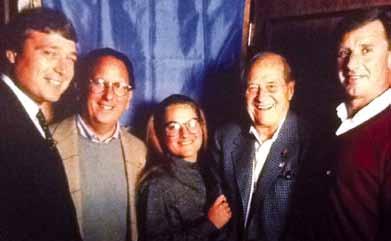
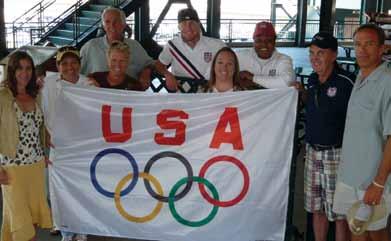
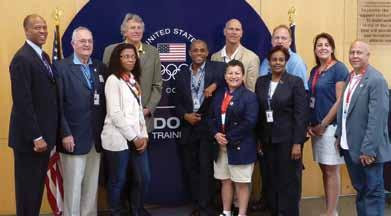
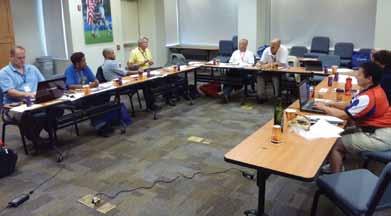 A half-dozen 1968 teammates and their families and friends met for dinner and 1968 Mexico City Games stories on June 24 in Houston, Texas.
(L-R) front row: Johnnie Baldwin (boxing), George Foreman (boxing), Judy Dyer (track and field); back row: Glynn Saulters (basketball), Butch May (volleyball), Tom Lough (modern pentathlon).
Nancy Hogshead-Makar (swimming, 1980, ‘84) and Brian Shimer (bobsled, 1988, ‘92, ‘94, ‘98, ‘00)
Members of the Colorado Chapter took in a Colorado Rockies game on Sunday, September 11, 2011
Longtime friend of the USOC and former State of Washington fundraising chair Gov. Albert D. Rosellini passed away Monday, October 10, 2011 at the age of 101. The first OORF contributions came from his efforts.
(L-R) Jeff Blatnick, Ken Aretshy, Carolyn Pingatore Holmes, Gov. Albert Rosellini, Al Oerter. This photo was taken in 1990.
A half-dozen 1968 teammates and their families and friends met for dinner and 1968 Mexico City Games stories on June 24 in Houston, Texas.
(L-R) front row: Johnnie Baldwin (boxing), George Foreman (boxing), Judy Dyer (track and field); back row: Glynn Saulters (basketball), Butch May (volleyball), Tom Lough (modern pentathlon).
Nancy Hogshead-Makar (swimming, 1980, ‘84) and Brian Shimer (bobsled, 1988, ‘92, ‘94, ‘98, ‘00)
Members of the Colorado Chapter took in a Colorado Rockies game on Sunday, September 11, 2011
Longtime friend of the USOC and former State of Washington fundraising chair Gov. Albert D. Rosellini passed away Monday, October 10, 2011 at the age of 101. The first OORF contributions came from his efforts.
(L-R) Jeff Blatnick, Ken Aretshy, Carolyn Pingatore Holmes, Gov. Albert Rosellini, Al Oerter. This photo was taken in 1990.
Alabama Olympians & Paralympians
President: Jennifer Chandler Stevenson (diving, 1976) (205) 322-7009
Arizona Olympians & Paralympians
President: Mike Troy (swimming, 1960) (408) 227-1247
Colorado Olympians & Paralympians
President: Gene Kotlarek (skiing, 1960, ‘64) (303)-807-3911
Florida Olympians
President: Jim Millns (figure skating, 1976) (727) 741-2662
Hawaii Olympians
President: Michael Rothwell (sailing, 1976) (808) 737-8789
Idaho Olympians & Paralympians
President: Dick Fosbury (athletics, 1968) (208) 720-2352
Indiana Olympians
President: Ollan Cassell (athletics, 1964) (317) 466-0444
Michigan Olympians & Paralympians
President: Judi Brown Clarke (athletics, 1984) (517) 881-6710
Midwest Olympians & Paralympians
President: Diane Simpson Bundy (rhythmic gymnastics, 1988) (847) 452-7843
Missouri/Illinois Olympians & Paralympians
President: John Carenza (soccer, 1972) (314) 846-4124
National Capital Area Olympians
President: Arlene Limas (taekwondo, 1988) (540) 720-1988
New England Area Olympians
President: Tina Noyes (figure skating, 1968) (781) 572-5469
Northern California Olympians
President: Greg Massialas (fencing, 1980, ‘84, ‘88) (415) 441-0521
Oregon Olympians
President: Lisa Kosglow (skiing, 1998, ‘02) (541) 400-9061
Southern California Olympians
President: Cathy Marino (canoe/kayak, 1988, ‘92) (714) 847-5596
Southwest Olympians
President: Sammy Walker (weightlifting, 1976) (469) 955-3158
Tri-States Olympians
President: Otis Davis (athletics, 1960) (201) 392-8448
Utah Olympians
President: Debra Stark (gymnastics, 1972) (801) 369-9918
Washington State Olympians
President: John Stillings (rowing, 1984) (206) 440-0708
Western PA-OH-WVA Olympians
President: Jeff McLaughlin (rowing, 1988, ‘92) (412) 253-0857
No chapter in your area?
Interested in starting a chapter?
Contact the U.S. Olympians Association office for details at (800) 717-7555

Paralympians Melissa Stockwell (center) and Sarah Reinertsen (left) won gold and silver, respectively, in the women’s TRI-2 category at the 2011 ITU Paratriathlon World Championships in Beijing, China. Stockwell and Reinertsen were joined on the podium by teammate Scout Bassett for a U.S. sweep. Photo credit: USA Triathlon
UNITED STATES OLYMPIC COMMITTEE BOARD OF DIRECTORS
USOC CHAIRMAN
Larry Probst
Robert Bach
James Benson
Bob Bowlsby
Ursula Burns
Anita DeFrantz (rowing, 1976, ‘80)
James Easton
John Hendricks
Nina Kemppel (cross country skiing, 1992, ‘94, ‘98, ‘02)
Jair Lynch (gymnastics, 1992, ‘96)
Susanne Lyons
Mary McCagg (rowing, 1992, ‘96)
Dave Ogrean
Michael Plant (speedskating, 1980)
Angela Ruggiero (ice hockey, 1998, ‘02, ‘06, ‘10)
USOC CHIEF EXECUTIVE OFFICER
Scott A. Blackmun
U.S. OLYMPIANS OFFICERS 2009-2012
PRESIDENT
Willie Banks (athletics, 1980, ‘84, ‘88)
VICE PRESIDENTS
Carol Brown (rowing, 1976, ‘80, ‘84)
Caryn Davies (rowing, 2004, ‘08)
Dick Fosbury (athletics, 1968)
Gary Hall, Sr. (swimming, 1968, ‘72, ‘76)
Micki King (diving, 1968, ‘72)
Greg Louganis (diving, 1976, ‘80, ‘84, ‘88)
Linda L. Mastandrea (Paralympic athletics, 1992, ‘96)
IMMEDIATE PAST PRESIDENT
John Naber (swimming, 1976)
PAST PRESIDENT
Bill Toomey (athletics, 1968)
EDITORIAL STAFF
SENIOR EDITOR
Cynthia E. Stinger (team handball, 1984, ‘88, ‘92)
ASSOCIATE EDITOR
Christine Taylor
PRODUCTION DIRECTOR
Denise O’Shea - O’Shea Design www.teamusa.org
Photos by: Getty Images & Other Sources